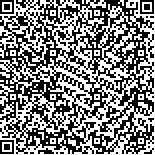王一吉,李建军,周红俊,高明明,高连军,卫波,刘根林,郑樱,张缨,郝春霞,康海琼,袁媛.脊髓损伤患者与健康人步行时躯干肌肌肉利用率的对照研究[J].中华物理医学与康复杂志,2016,38(1):19-23
扫码阅读全文

|
| 脊髓损伤患者与健康人步行时躯干肌肌肉利用率的对照研究 |
|
| |
| DOI: |
| 中文关键词: |
| 英文关键词: Spinal cord injuries Walking Trunk Electromyography |
| 基金项目: |
|
| 摘要点击次数: 2306 |
| 全文下载次数: 3579 |
| 中文摘要: |
| 目的观察和比较脊髓损伤患者与健康人步行时躯干肌的肌肉利用率(MUR)。 方法选取20例T11完全性脊髓损伤患者(病例组)及健康志愿者(对照组),每组10例,采用表面电极和同步摄像技术对2组受试者步行时躯干肌表面肌群(胸大肌、腹直肌、腹外斜肌、斜方肌、背阔肌、竖脊肌)的肌电活动情况进行测试和分析,以最大用力收缩的百分比表示MUR。用独立样本t检验分析比较组间MUR的差异,用单因素方差分析比较组内MUR的差异。 结果①站立相时,病例组胸大肌、腹外斜肌和竖脊肌的MUR分别为(24.93±17.22)%、(30.38±13.92)%和(15.54±5.02)%,均大于对照组[(7.54±3.84)%、(10.48±6.02)%及(10.85±4.61)%],且组间差异有统计学意义(P<0.05)。迈步相时,病例组腹外斜肌和竖脊肌的MUR[(29.11±24.62)%和(19.57±11.15)%]大于对照组[(8.20±4.23)%和(8.54±3.95)%],组间差异亦有统计学意义(P<0.05)。②站立相时,病例组组内比较,腹外斜肌的MUR大于其它肌肉(胸大肌除外),而胸大肌的MUR[(24.93±17.22)%]大于斜方肌[(10.88±9.28)%],差异均有统计学意义(P<0.05);对照组组内比较,各肌肉的MUR差异无统计学意义(P>0.05)。迈步相时,病例组内比较,腹外斜肌的MUR大于斜方肌(P<0.05);对照组内斜方肌的MUR[(13.09±9.17)%]大于胸大肌[(7.90±4.06)%]和腹直肌[(5.76±4.21)%],背阔肌的MUR[(11.06±6.52)%]大于腹直肌[(5.76±4.21)%],且差异均有统计学意义(P<0.05)。 结论T11完全性脊髓损伤患者步行时胸大肌、腹外斜肌及竖脊肌的肌肉利用率高于健康人,可为优化步行训练方案提供参考。 |
| 英文摘要: |
| Objective To analyze the muscle utilization ratio (MUR) of the trunk muscles when walking after spinal cord injury (SCI). Methods Ten patients with T11 SCI formed the SCI group, and 10 healthy subjects were chosen as controls. The MUR of their pectoralis major, rectus abdominus, obliquus externus abdominis, trapezius, latissimus dorsi and erector spinae muscles were recorded while walking. Two independent sample t-tests were used to compare the MURs of the two groups. The MURs of the trunk muscles in the same group were compared using single-factor analysis of variance. ResultsThe SCI group displayed significantly higher utilization of the pectoralis major, obliquus externus abdominis and erector spinae muscles compared to the control group during the stance phase, and significantly higher utilization of the obliquus externus abdominis and erector spinae during the swing phase. In the SCI group, the MUR of the obliquus externus abdominis was significantly higher than that of other muscles (except the pectoralis major) and the MUR of the pectoralis major was significantly greater than that of the trapezius during the stance phase. However, there were no significant differences in MUR among the different trunk muscles in the healthy group. The SCI patients generated significantly greater activity in the obliquus externus abdominis than in the trapezius during the swing phase. The control group developed significantly greater MUR in the trapezius than in the pectoralis major and more in the latissimus dorsi than in the rectus abdominus during the swing phase. ConclusionT11 complete SCI patients needed to generate higher MUR in the pectoralis major, obliquus externus abdominis and erector spinae during walking. This finding can serve as a reference for improving ambulation training. |
|
查看全文
查看/发表评论 下载PDF阅读器 |
| 关闭 |
|
|
|